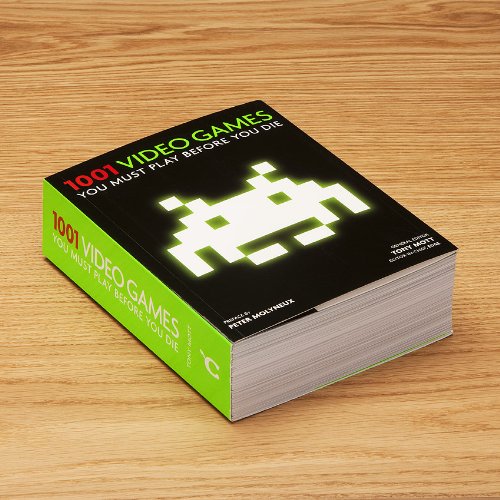If you needed any more proof that video games were now as legitimate as film, music and books in terms of social and cultural importance, then 1001 video games you must play before you die is it.
It’s not that the list of games itself is perfect. Taking games from the formalative year of 1971 right through to 2010, many of the titles listed in the book are of debatable quality, and the weighting of the book is definitely towards more the more recent years.
Certainly, as you read the description of such throwaway games as Max and the Magic Marker (good game, but a “must play”?), Starship Patrol and Guitar Hero: Metallica (again, it’s a decent game, but hardly genre defining), you’ll be wondering whether the contributors have lost the plot when some genuine classics remain unrepresented.
But that debate belies the significance of the majority of the book. 1001 video games you must play before you die is more important – and potent – because it recognises the heritage and history of the video games industry. As you flick through the book you can see how one game influenced another, how the social culture of the 70s affected the development of games differently to that of the 90s.
Tightly edited by Edge Magazine editor-in-chief, Tony Mott, there is a consistency across each mini-essay, ably explaining the reasons each game has a place on the list. It delves into the importance of the game to the development of the industry, the social and political impact various games have had on our broader culture, and tracks how each genre has evolved through the years.
The presentation of the books is of equivalent standard to other books in this series, too. High quality glossy paper and well-chosen screenshots look better than anything seen in magazines, and it reads easier than it would on the Web. As collectable memorabilia, then, it’s great.
The real strength of this series of books is not in how strong the list is, because that is derived by personal opinion, but then the 1001 series was never about quality of individual titles. It was about highlighting those books, movies, CDs and games that have had an impact on the development of the industry, and in recognising that there are indeed 1001 games worthy of making a list out, Tony Mott and contributors have shown that this industry is a legitimate one – both for business and artistic pursuit.
As a result, this is a reference book that book is a must have for aspiring developers as well as being a good read. If people use this book as a standard for what people should be playing, then the industry as a whole can only improve in turn.








